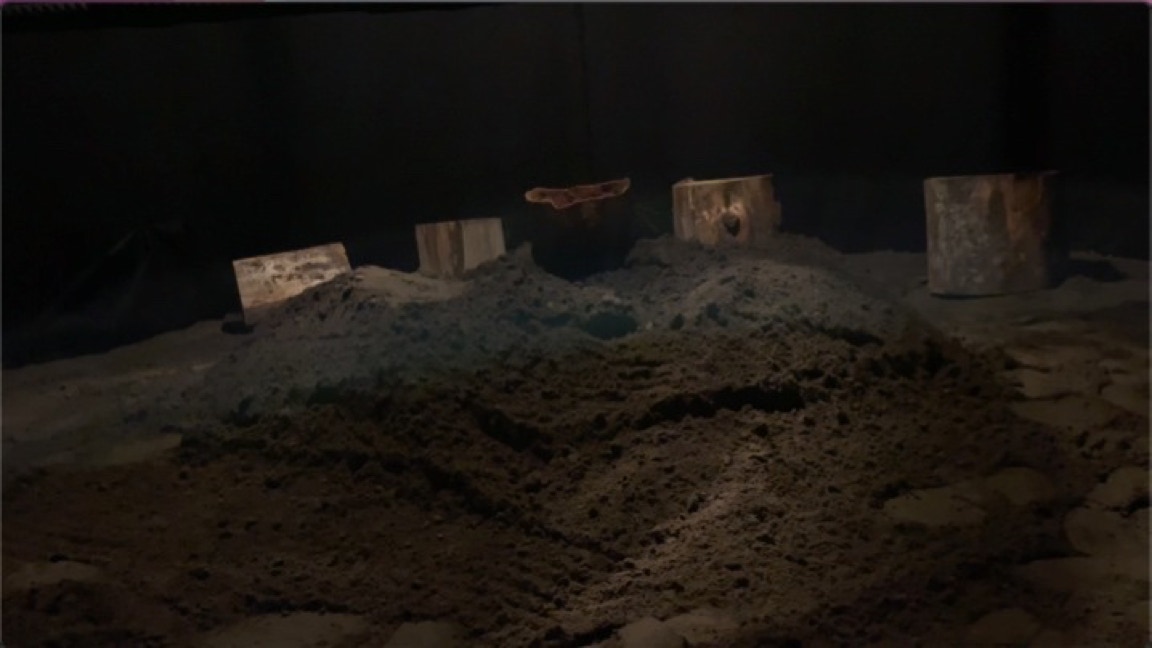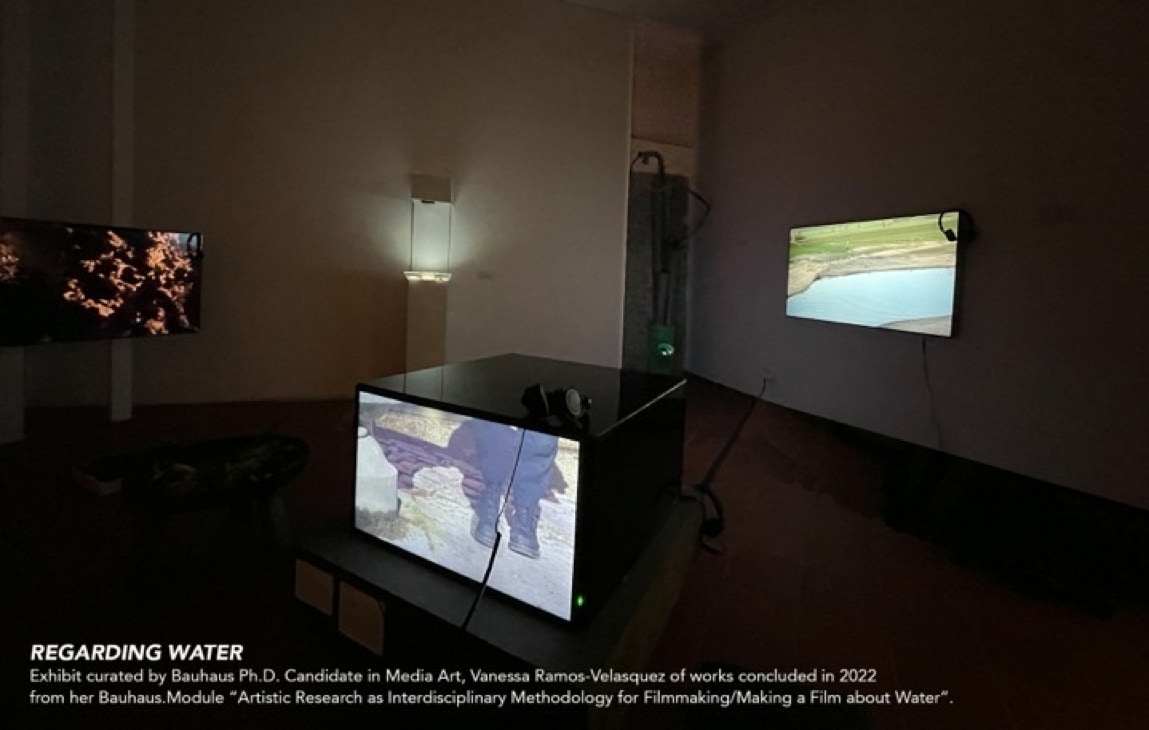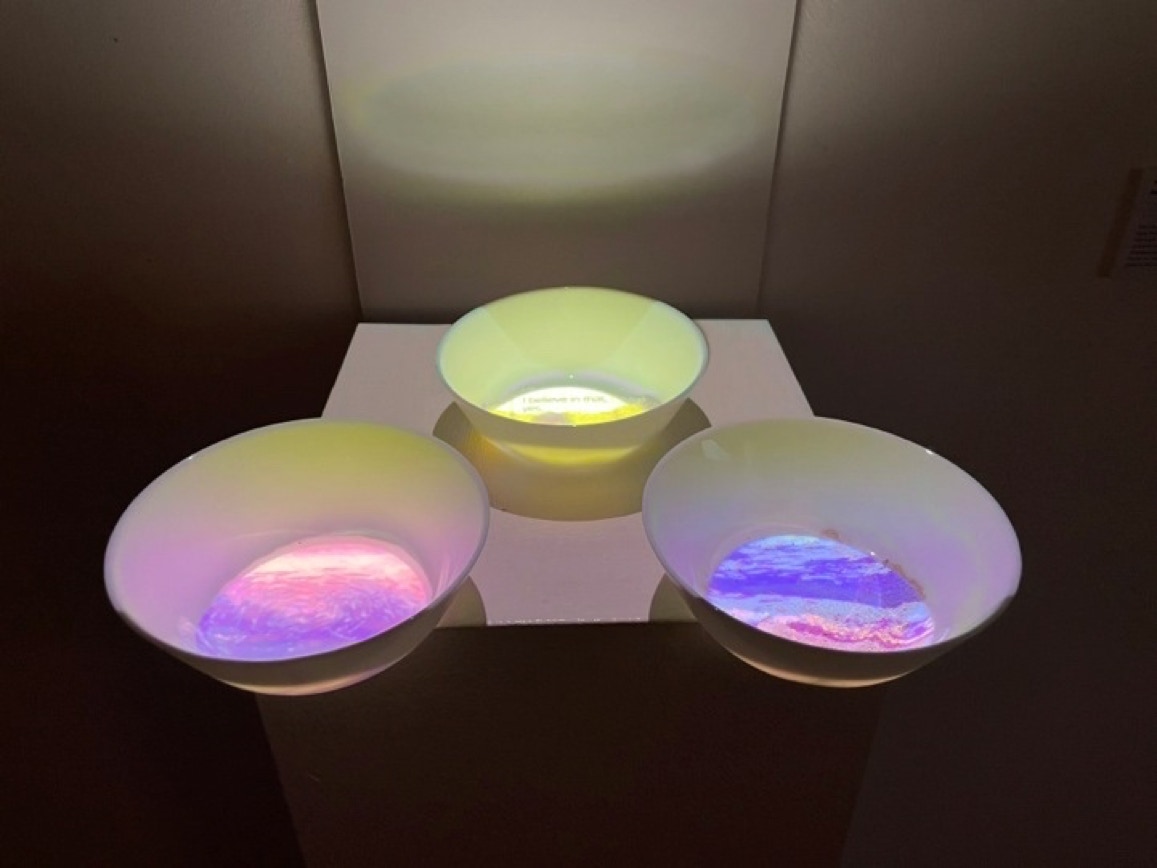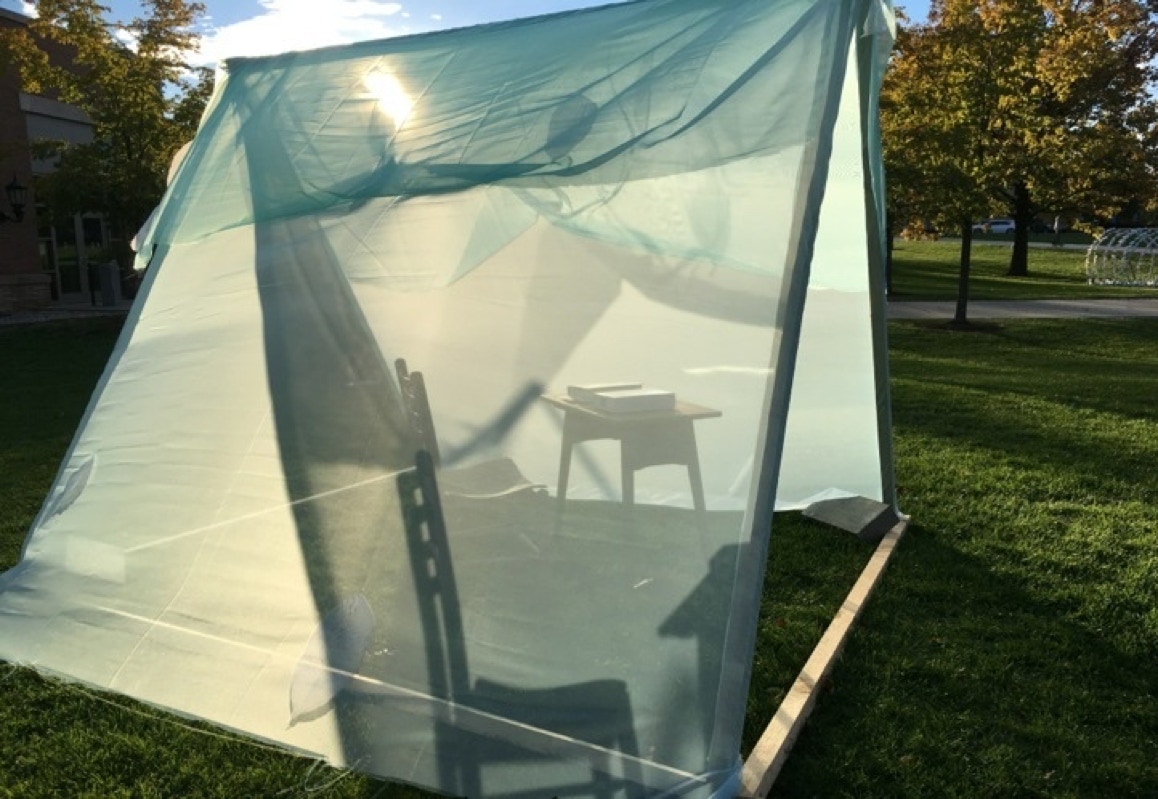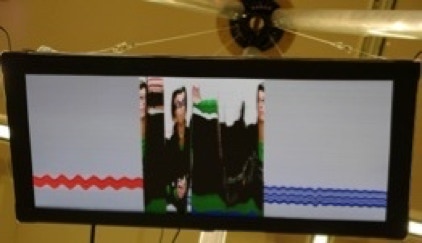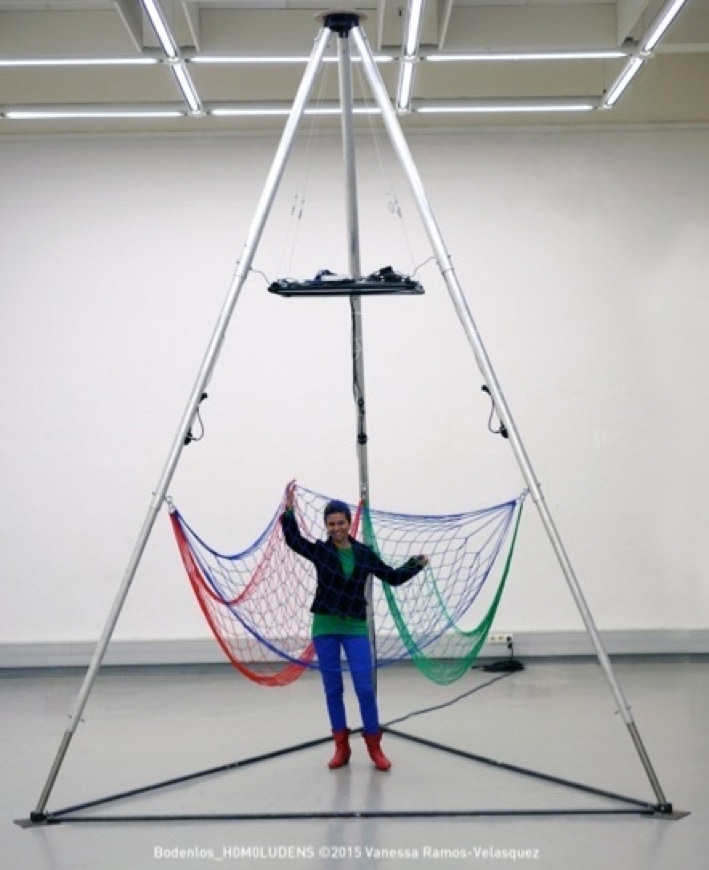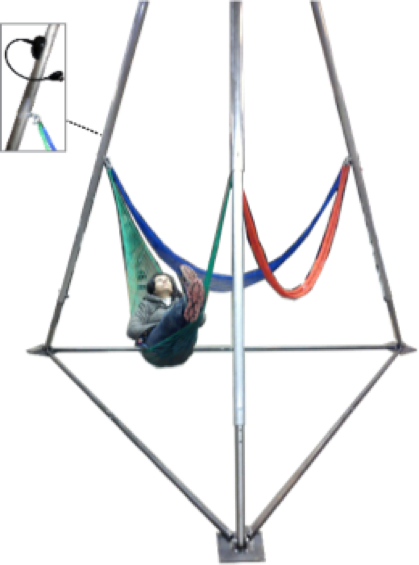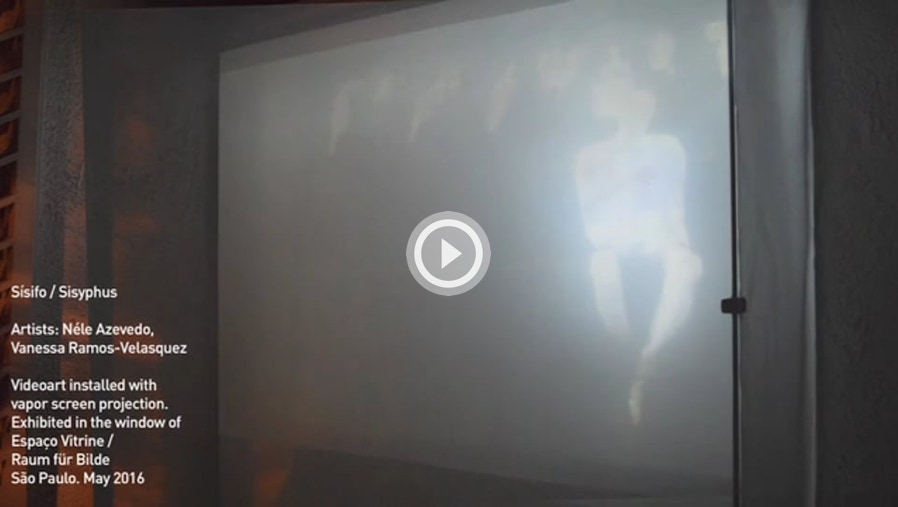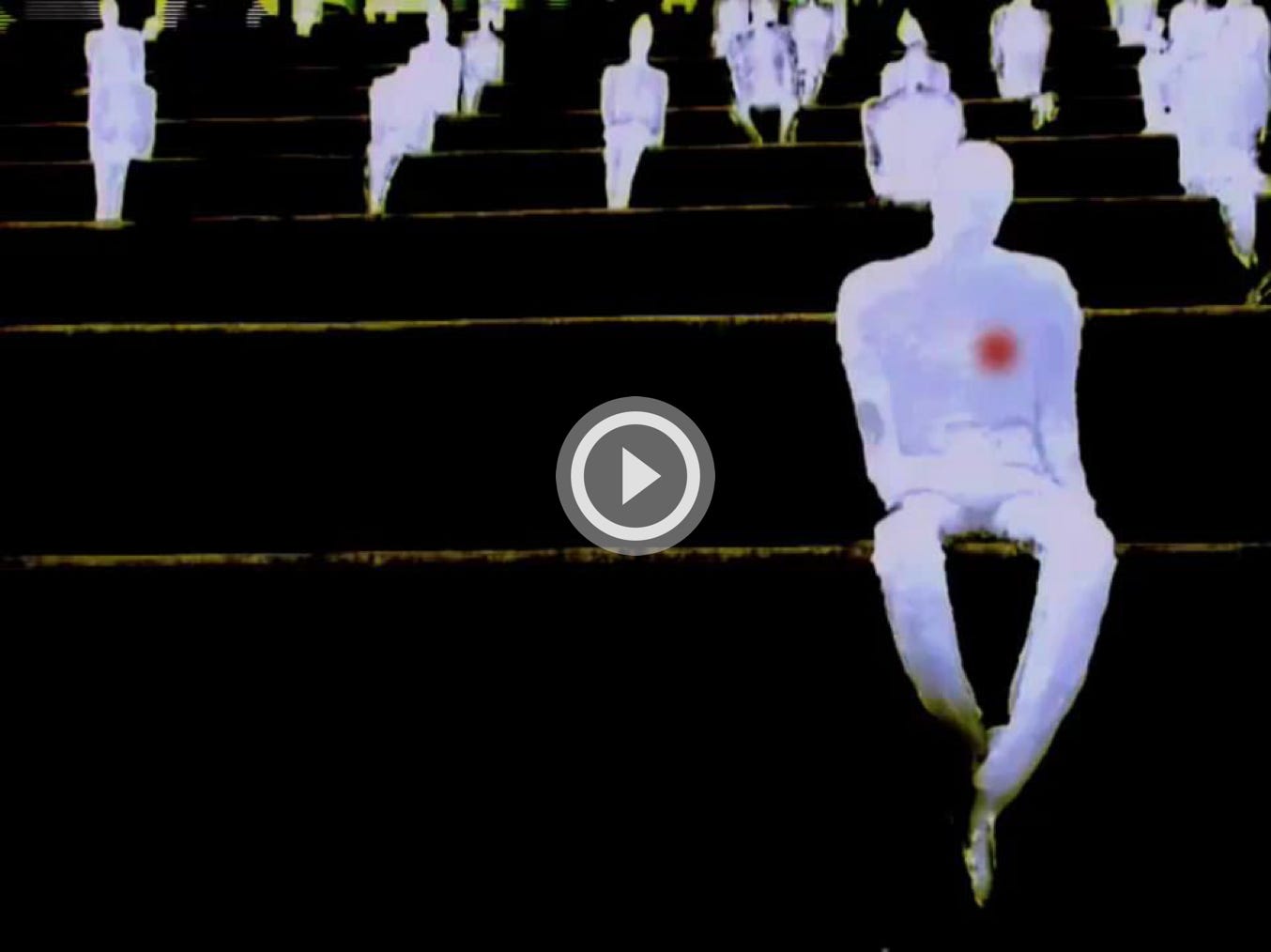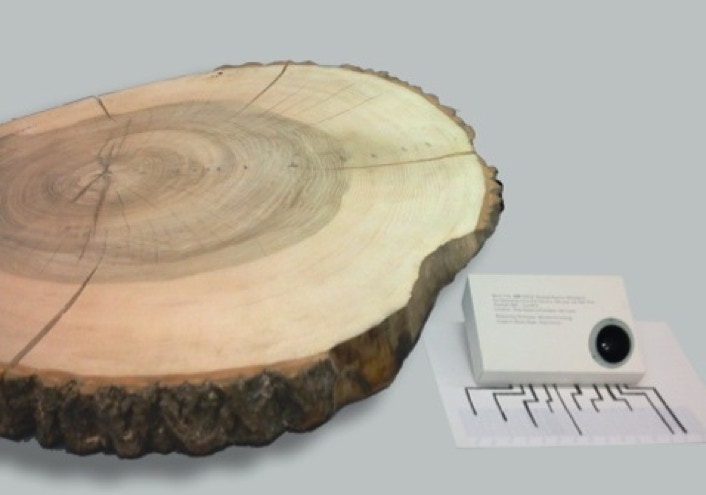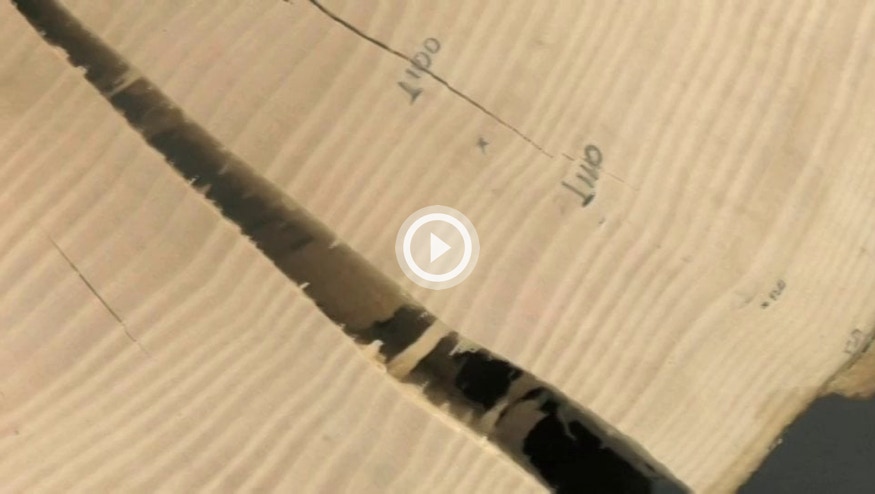
THE COMING CATASTROPHE AND ITS POSSIBLE DECELERATORS//
THE FUTURE IS ANCESTRAL (2023)
Language: Shawãdawa and Portuguese.
https://zur-nachahmung-empfohlen.de/project/vanessa-ramos-velasquez/
Online component with my article The Drive Toward the Coming Catastrophe and Its Possible Decelerators, and other materials.

Media installation with water and earth in glass bowls, and interview with Peruvian Matsigenka indigenous leaderships, Simeón and Ruben Rivera Perera.
Color, 04:02, looped video.
Near the conclusion of Artistic Research for my current Ph.D. project at Bauhaus University Weimar, the Corona pandemic broke out and I became isolated in the Peruvian Amazon forest. While trying to return to Germany, I was quarantined in a Matsigenka community. There, I had the chance to interview some of its leaderships, the brothers Simeón and Ruben Rivera Perera on the issue of water security. These narratives offer a counterflow to the western idea of progress.

Media installation with video projection into glass bowls filled with water, earth and an interview with Peruvian Matsigenka indigenous leaderships, Simeón and Ruben Rivera Perera.
Color, 04:02, looped, mapped as simulated 3-channel video.
Near the conclusion of Artistic Research for my current Ph.D. project at Bauhaus University Weimar, the Corona pandemic broke out and I became isolated in the Peruvian Amazon forest. While trying to return to Germany, I was quarantined in a Matsigenka community. There, I had the chance to interview some of its leaderships, the brothers Simeón and Ruben Rivera Perera on the issue of water security. These narratives offer a counterflow to the western idea of progress.

A participatory installation containing the book The Falling Sky by Davi Kopanawa Yanomami and Bruce Albers set next to a companion object: a booklike box as a recording device inviting the tent visitor to contribute her/his own narrative about their relationship to nature.

BODENLOS_H0M0 LUDENS (2015) Bodenlos_Homo Ludens pays homage to both the Wayãpi Indigenous architectural design structure for fishing expeditions and the Bodenlos “building networks for survival” philosophy of Czech-Brazilian media philosopher Vilém Flusser. The installation is generative, interactive and participatory. It captures and displays the occupants of the structure in their various perspectives, altered in the space-time continuum of the slitscanning live image-making and image-transforming processes. Bodenlos_Homo Ludens becomes an assemblage when occupied. The “Homo Ludens” character is revealed as the installation scans its surroundings: an act of image-hunting of its landscape. The image captured by each of the three cameras traces a Red, Green, Blue partitioned triptych. The resulting unified image is continuously rewritten from left to right erasing the previous scan, while new impressions and traces are formed.
Bodenlos_Homo Ludens was installed at KunstKraftWerk Leipzig on 30/4/2015 at the Exhibition DEVOUR! Social Cannibalism, Political Redefinition and Architecture, curated by Marta Jecu.
Bodenlos_Homo Ludens received a production grant from the Karl-Hofer- Gesellschaft e.V.

Videoart installation in collaboration with Brazilian artist Néle Azevedo.
Sisyphus is a video in loop inspired by Albert Camus' Myth of Sisyphus - a philosophical essay on the Absurd. Anthropomorphic ice sculptures melt and pulsate in a continuous process of reconstruction - appearing and disappearing - set to the sound of a heartbeat and breathing. The visual source is the urban intervention work by Néle Azevedo, Monumento Mínimo (Minimum Monument), recorded at the Municipal Theatre in São Paulo.
Sisyphus is conceptualized to be video-projected onto a curtain of steam whose support gives it a singularity in the interpretation of the Sisyphus myth – divested of the materiality of stone and earth, Sisyphus gains ephemeral dematerialization. He goes through the three stages of the water element – solid: ice, liquid: melting, and gaseous state: vapor. This effect can also be attained by projecting the video onto layered voile sheets and a fog-machine with timed programming.
Video source for installation: a 3-min. videoart piece.
Videodocumentation of videoinstallation at Espaço Vitrine, São Paulo. 2016.

360o conjures art, design, science of dendrochronology and DIY technology. The natural entity as cultural object in this work is a 127-year old Ash tree planted in 1886 and cut in 2013 due to a new road construction near the Rote Kaserne in Potsdam, Germany.
I have measured and analyzed the 127 tree rings at the Deutsches Archaeologisches Institut in order to create a narrative interface with 10 audio tracks describing matching significant events in German society, particularly of the Potsdam-Berlin area, corresponding to the most significant tree ring occurrences of this tree. The ten narratives can be activated by touching the digital line interfaces. In addition, there is a sound layer for the sonification of data stemming from the 1/100mm dendrochronology measurement of the 127 seasonal/yearly growth rings of the tree slice. More than a requiem for a tree, the sound installation gives voice to the knowledge contained in the tree, normally hidden from anthropocentric perception.



